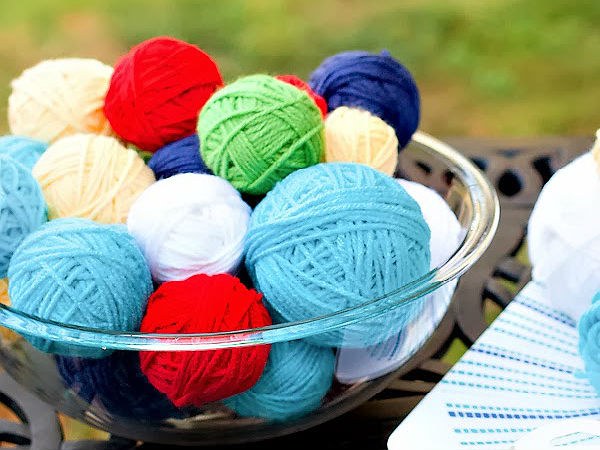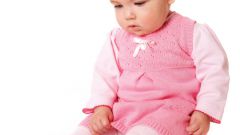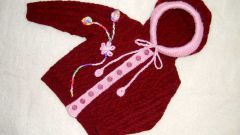Requirements for children's yarn much higher than usual yarn for knitting. When deciding what yarn to choose for knitting baby things, be sure to pay attention to its composition and quality, and not on the manufacturer's recommendations.
To determine if you like thread crochet children can check them by touch. Best the ball of yarn to attach to the cheek. The threads must be soft, pleasant to the body and they should not shoot up.
Be sure to smell them and make sure that no extraneous odors. Baby yarns, including dyed, must be hypoallergenic – these qualities conscientious manufacturer must indicate on the label of the ball of thread.
Knitting things for babies to take only natural yarn. It can be cotton, silk threads or Merino wool.
Yarn made from natural cotton is good in summer and winter. Flowing air and allowing your body to breathe, it nevertheless, has a low warming effect, which is good in the heat. In winter for children's products is also better to choose cotton if possible to take natural hair, you do not. Unlike products made from synthetic fibers, cotton will keep the heat under outerwear and allow the body to breathe.
Products made of natural cotton fibers is quite dense and can quickly lose shape, so the threads are often added to synthetic fibers, such as acrylic. This allows the product to be worn longer and better to keep the shape. Baby yarns for knitting does not have in its composition to contain more than 40% of synthetic additives.
When choosing a wool yarn for children pay attention to those threads that have no hair and gently fall to the body. Most often, children's products use Merino wool. She has the right qualities, thus the threads moderately thin and a little drawn.
The silk is also commonly used for children's products. Natural yarn from 100% silk extremely rare, but very often it is added in part of other fibers, such as, silk-wool and silk-cotton. Silk is good because it has hygroscopicity, air exchange qualities and the ability to retain heat. Unlike wool, silk virtually forms a spool that allows the product in the long term not lose its appearance. Silk is durable, and the product by its elasticity keeps the shape.
The main characteristics of yarn for knitting
To determine if you like thread crochet children can check them by touch. Best the ball of yarn to attach to the cheek. The threads must be soft, pleasant to the body and they should not shoot up.
Be sure to smell them and make sure that no extraneous odors. Baby yarns, including dyed, must be hypoallergenic – these qualities conscientious manufacturer must indicate on the label of the ball of thread.
The composition of the yarn for knitting baby things
Knitting things for babies to take only natural yarn. It can be cotton, silk threads or Merino wool.
Yarn made from natural cotton is good in summer and winter. Flowing air and allowing your body to breathe, it nevertheless, has a low warming effect, which is good in the heat. In winter for children's products is also better to choose cotton if possible to take natural hair, you do not. Unlike products made from synthetic fibers, cotton will keep the heat under outerwear and allow the body to breathe.
Products made of natural cotton fibers is quite dense and can quickly lose shape, so the threads are often added to synthetic fibers, such as acrylic. This allows the product to be worn longer and better to keep the shape. Baby yarns for knitting does not have in its composition to contain more than 40% of synthetic additives.
When choosing a wool yarn for children pay attention to those threads that have no hair and gently fall to the body. Most often, children's products use Merino wool. She has the right qualities, thus the threads moderately thin and a little drawn.
The silk is also commonly used for children's products. Natural yarn from 100% silk extremely rare, but very often it is added in part of other fibers, such as, silk-wool and silk-cotton. Silk is good because it has hygroscopicity, air exchange qualities and the ability to retain heat. Unlike wool, silk virtually forms a spool that allows the product in the long term not lose its appearance. Silk is durable, and the product by its elasticity keeps the shape.



